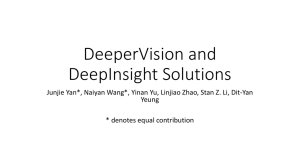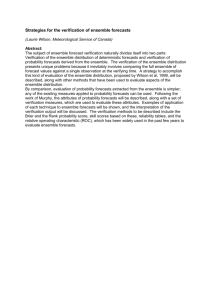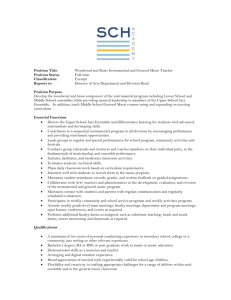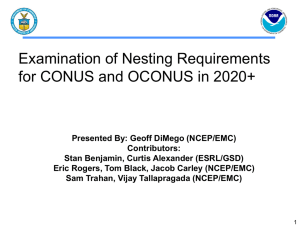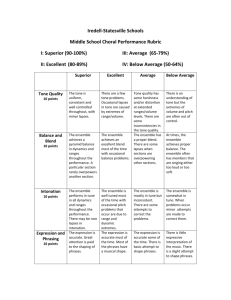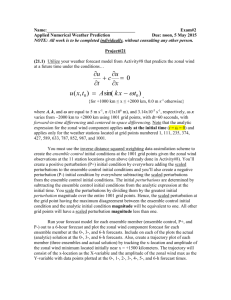Ensemble Related Developments
advertisement
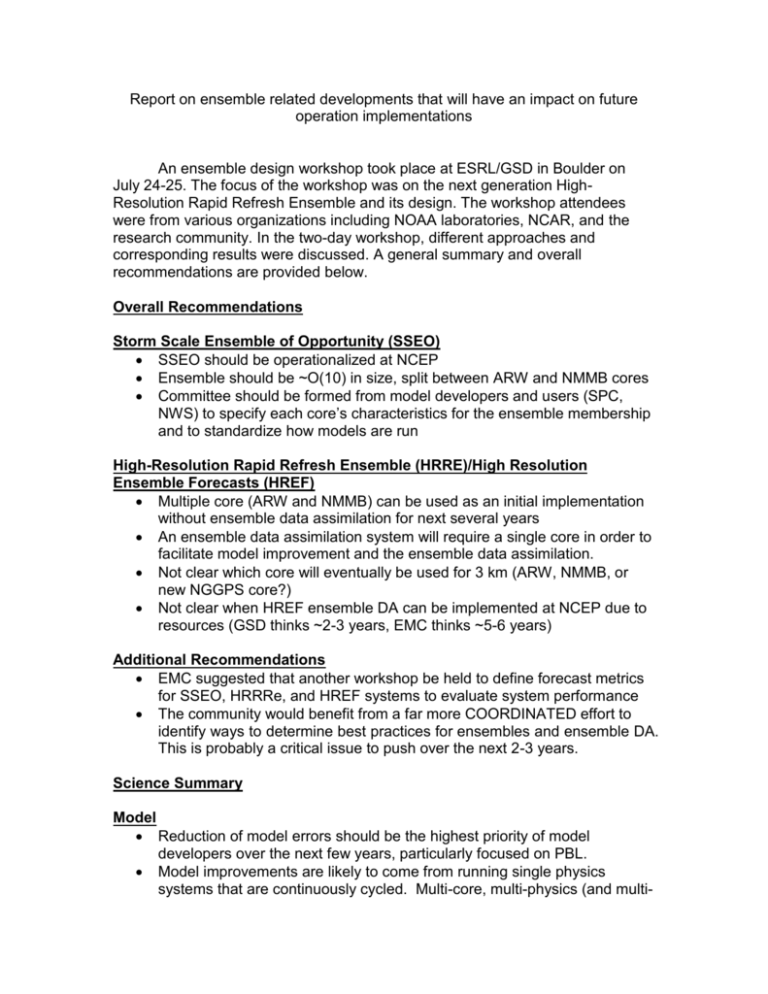
Report on ensemble related developments that will have an impact on future operation implementations An ensemble design workshop took place at ESRL/GSD in Boulder on July 24-25. The focus of the workshop was on the next generation HighResolution Rapid Refresh Ensemble and its design. The workshop attendees were from various organizations including NOAA laboratories, NCAR, and the research community. In the two-day workshop, different approaches and corresponding results were discussed. A general summary and overall recommendations are provided below. Overall Recommendations Storm Scale Ensemble of Opportunity (SSEO) SSEO should be operationalized at NCEP Ensemble should be ~O(10) in size, split between ARW and NMMB cores Committee should be formed from model developers and users (SPC, NWS) to specify each core’s characteristics for the ensemble membership and to standardize how models are run High-Resolution Rapid Refresh Ensemble (HRRE)/High Resolution Ensemble Forecasts (HREF) Multiple core (ARW and NMMB) can be used as an initial implementation without ensemble data assimilation for next several years An ensemble data assimilation system will require a single core in order to facilitate model improvement and the ensemble data assimilation. Not clear which core will eventually be used for 3 km (ARW, NMMB, or new NGGPS core?) Not clear when HREF ensemble DA can be implemented at NCEP due to resources (GSD thinks ~2-3 years, EMC thinks ~5-6 years) Additional Recommendations EMC suggested that another workshop be held to define forecast metrics for SSEO, HRRRe, and HREF systems to evaluate system performance The community would benefit from a far more COORDINATED effort to identify ways to determine best practices for ensembles and ensemble DA. This is probably a critical issue to push over the next 2-3 years. Science Summary Model Reduction of model errors should be the highest priority of model developers over the next few years, particularly focused on PBL. Model improvements are likely to come from running single physics systems that are continuously cycled. Multi-core, multi-physics (and multi- background ICs) systems are designed to increase ensemble spread also hide model biases making it very difficult to detect and correct model errors. Need to understand biases in storm-motion in ensemble-based DA systems over next year. 1 km grid will be needed to predict evolution of individual storms. Forecast & Verification For SSEO-type applications (12-36 hour forecasts), neighborhood methods appear to provide useful information for probabilistic forecasts for severe weather threats Object-based methods will be useful for forecasts attempt to verify individual convective systems or large cells. Need to focus efforts on what is wrong with SSEO-type applications (what is the low-hanging fruit) to help focus model improvements. In addition, recently NCEP director Bill Lapenta requested a formation of the Modeling Advisory Committee (UMAC) to provide a comprehensive, technical review of the exiting NCEP Prediction Suite and strategy for future improvements. The UMAC report is under development and it will have a significant impact on the future of the operational suite. Below are some public record links providing more details: – https://www.earthsystemcog.org/projects/umac_model_advisory/ – All UMAC Presentations – Model Glossary
